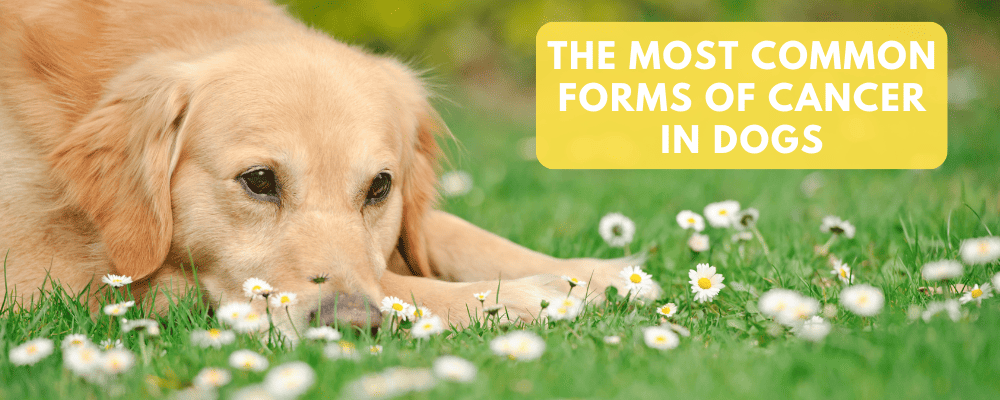Dogs are much loved members of our families and frequently our most loyal of friends. While it can be upsetting just to think about our dogs developing cancer, knowing what the signs and symptoms of cancer in dogs are means that you may be able to spot symptoms early, giving your pet their best chance of a good treatment outcome. When it comes to cancer in dogs, early diagnosis and treatment are key.
Dogs can develop many of the same cancers as humans, and with very similar symptoms. Here are some of the most common types of cancer that our vets see in dogs:
Lymphoma/Lymphosarcoma
Lymphoma is a very common form of cancer in dogs. Lymphoma is actually a generic term used by vets to describe a group of cancers that stem from a type of white blood cell called lymphocytes which help the immune system to fight off infection. While there are more than 30 different types of lymphoma which dogs can develop, the most common types of dog lymphoma are, multicentric, alimentary, mediastinal and extranodal lymphoma.
Mast Cell Tumor
In dogs, most mast cell tumors occur in the skin or just underneath the skin, although they are occasionally reported in other areas, including around eyes, mouth, throat, and spine. Depending on the location of the cancer, these tumors can be difficult for your vet to remove. That said, this type of cancer in dogs can be cured if the tumor is detected early and fully removed.
Melanoma
Like mast cell tumors, melanomas are also found on the dog’s skin. Melanomas are frequently benign and easily treated, however malignant melanomas are a serious condition. Sadly, malignant melanoma is prone to spreading quickly to other areas of the dog’s body. Typically these tumors are dark-pigmented although they can also lack pigment. Melanoma in dogs is often found in and around the mouth or on the feet.
Osteosarcoma (Bone Cancer)
Osteosarcoma is a very painful form of bone cancer that is most often found in the larger or longer bones of a dog such as leg bones or pelvis. Although any breed can be affected by this type of cancer, our vets most often see osteosarcoma in larger breed dogs including Dobermans, Boxers, Golden Retrievers, German Shepherds, Irish Wolfhounds, Rottweilers, and Weimaraners.
Hemangiosarcoma
This form of cancer is very serious and requires emergency intervention or it may be quickly fatal! Hemangiosarcomas can grow quite large and are often found in the spleen, but may grow anywhere blood vessels are present and can spread to other organs, including the dog’s heart and lungs.
Fibrosarcoma
This is a slow spreading form of cancer in dogs but can be difficult to treat. Amputation and radiation are commonly used to treat dogs with fibrosarcoma, in order to prevent recurrence.
Signs of Cancer in Dogs
It can be difficult to detect signs or symptoms of cancer by simply looking at your dog. In fact, even blood work often cannot detect certain cancers in dogs. That said, there are some signs that you can watch for that can indicate your dog may have cancer.
As with people, early detection is the key to positive treatment outcomes when it comes to cancer in dogs. Here are some things to look for:
- Sores that don’t heal
- Bleeding or discharge
- Loss of appetite
- Unexplained weight loss
- Strong odor
- Swelling
- Lumps or bumps beneath the skin
- Lethargy, depression, disinterest in exercise
- Difficult or painful breathing or coughing
- Straining when going to the bathroom
- Challenges when eating or swallowing
- Pain or difficulty walking, lameness or stiffness
If you see any new or growing lump that is greater than ½ inch in size, that is something that should be checked. Have it checked even earlier if it is on a sensitive area like an eyelid. Also if you notice any of the symptoms listed above, make an appointment to see your vet as soon as possible.
